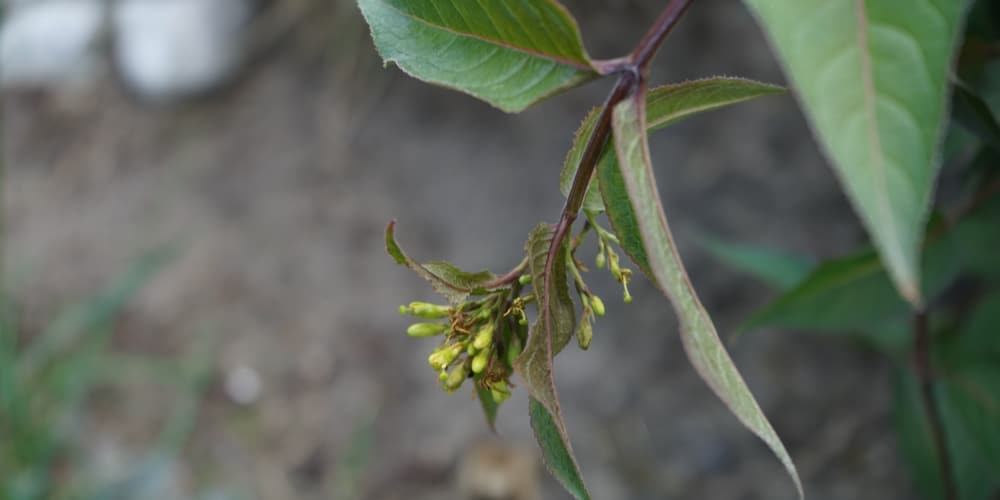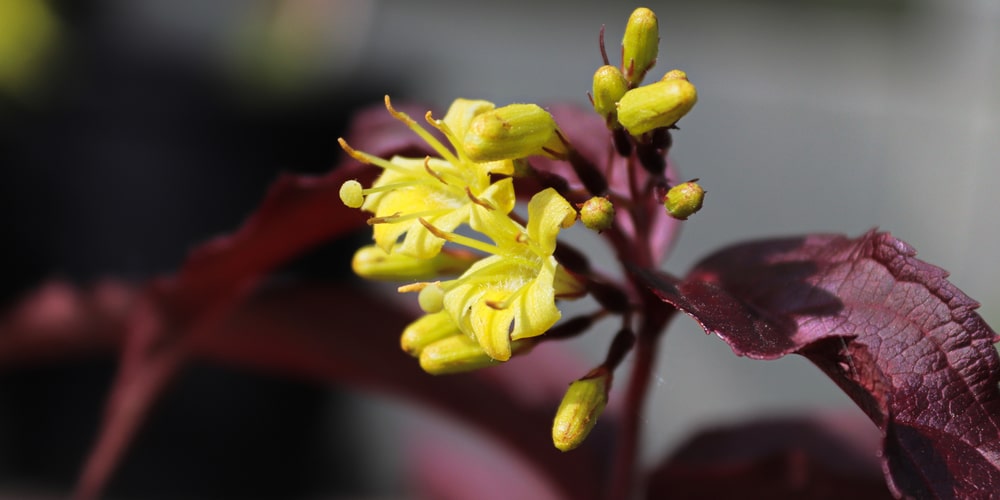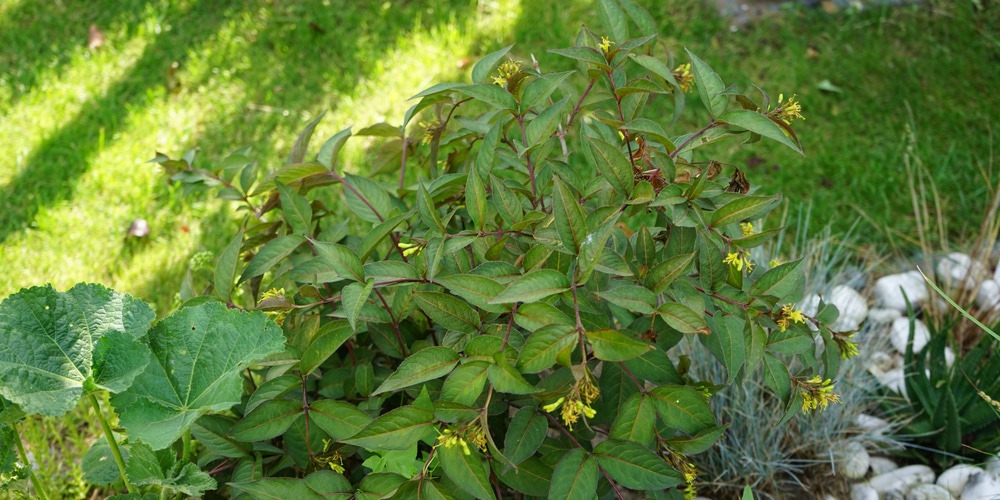Night glow Diervilla, also known as Diervilla splendens El Madrigal nightglow, is a very adaptable easy-to-grow shrub. It is prized for its dark, moody burgundy foliage and bright, warmly yellow flowers.
In landscapes, the dramatic foliage and bright blooms of night glow Diervilla plants provide a striking contrast against greenery. Because of their short stature, they are an excellent choice for foundation planting, as an accent focal point, or as a low hedge. They also do well in containers.
| Botanical Name | Diervilla ‘nightglow’ |
| Common Name | Night glow Diervilla |
| Plant Type | Perennial |
| Flower Color | Showy, yellow flowers |
| Size When Mature | 24 to 36 inches tall, 24-36 inches wide |
| Bloom Time | Late Spring Early Summer |
| Sun Requirements | Full Sun to Partial Shade |
| USDA Hardiness Zones | 4-8 |
| Soil PH Range | 5.0-7.0 |
| Soil Type | Slightly acidic, well-draining |
| Water Needs | Medium |
| Native Area | North America |
If you are considering planting firefly nightglow Diervilla in your yard, it is imperative to know how to care for them beforehand so that you can provide them with ideal growing conditions.
Of course, like most plants, nightglow Diervilla plants require occasional maintenance and upkeep to grow best. Read on to learn more about Diervilla plants and their ideal growing conditions.
What you Need to Know About Nightglow Diervilla
Nightglow Diervilla is a dense, low-growing, multi-stemmed deciduous shrub that grows to about 2 – 3 feet tall and as wide. It is truly hardy for USDA planting zone 4 to 8 and relatively drought resistant when established.
From late spring to early summer, these plants bloom into showy, yellow, trumpet-shaped flowers that contrast their red-purplish foliage. Normally, the foliage emerges burgundy in spring, turns dusky red-purple in summer, and becomes more vivid in the fall with deeper red-purple to scarlet-orange hues.
The flowers appear at the end of the branches and attract many pollinators, including butterflies and bees. Best of all, it is native to the US, so it won’t run amok.
Nightglow Diervilla plants are very adaptive and will thrive in a range of lighting conditions. They also perform well in both dry and moist conditions.
Of significance, while these honeysuckles are best suited for use in outdoor pots and containers, they are still a fine choice for your landscape. It is ideal for use as an accent in smaller garden spaces or mixed shrub borders or as an attractive low hedge in larger yards.
How to Care for Nightglow Diervilla
Nightglow Diervilla plants are generally low-maintenance. They thrive in a wide range of soil types and light conditions but will do best in:
Light
Nightglow Diervilla thrives in full sun to partial shade, but foliage color and flowering will benefit from more sunlight. Plant your Diervilla plants in a spot that receives at least 5 hours of direct sunlight.
Water and Soil Needs
Diervilla plants prefer moist but well-draining, slightly acidic soils with a pH of about 5.0 to 7.0. Even so, they are not picky when it comes to soil conditions. They are very adaptable to both dry and moist conditions and will grow happily in virtually any soil type as long as it is well-draining.
These plants have moderate water needs and are quite drought-tolerant when established. Nightglow Diervilla plants growing in outdoor containers and baskets might require more frequent waterings than they would when growing in the garden.
Temperature Requirements
Nightglow Diervilla are sun-loving plants but will take low temperatures. They are hardy for USDA planting zones 4 to 8, meaning they can take temperatures as low as 40 degrees Fahrenheit.
Fertilizer
While nightglow Diervilla can and will survive even in dry, infertile soils, fertilizing them can help increase the size and amount of flowers they produce. Liquid fertilizers are the best for fertilizing these attractive plants, but granular or stake-type fertilizer will also do.
Apply well, balanced organic fertilizer in spring to encourage healthy growth.
Common diseases
Diervillas are relatively disease and pest-resistant. However, they may occasionally be attacked by fungal leaf spots and powdery mildew.
Pruning
Although these shrubs have a short stature, you will need to prune them occasionally. The best time to prune night glow Diervilla is late winter or early spring after the threat of frost has passed. They are very tolerant to pruning, and you can prune up to 6 inches.
Final Thoughts
Grown for their attractive red-purple foliage and showy yellow blooms, nightglow Diervilla plants are generally easy to grow and low-maintenance plants. Hopefully, this care guide helps you provide your Diervilla shrubs with the best growing conditions.



